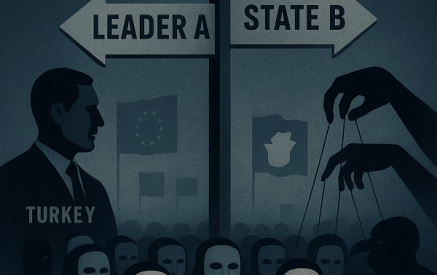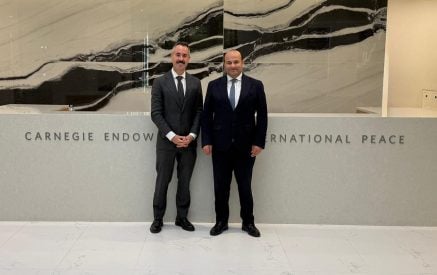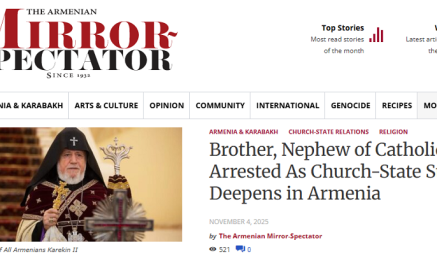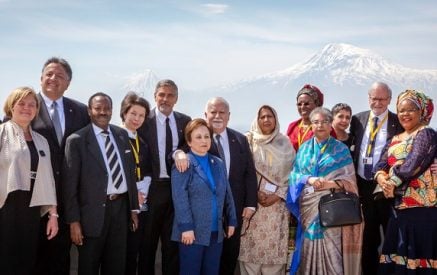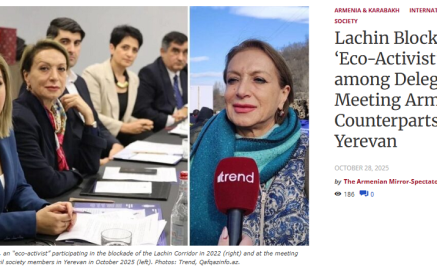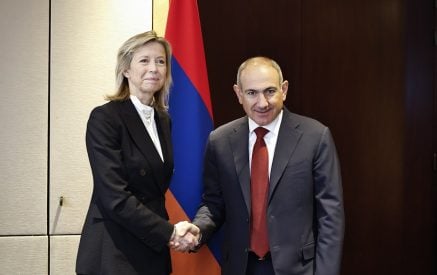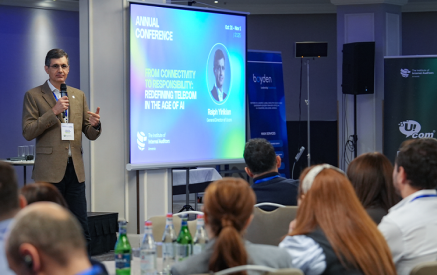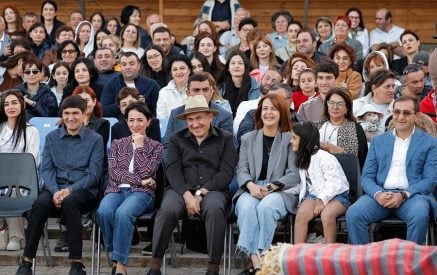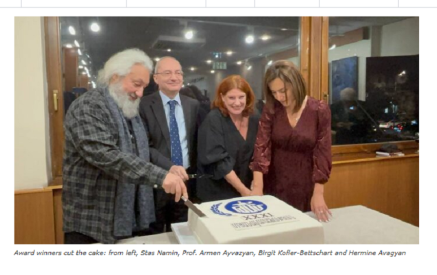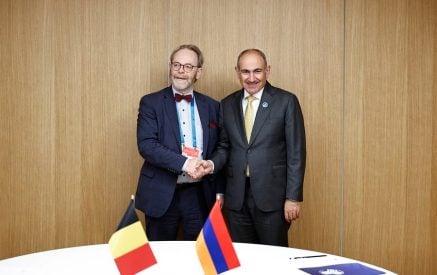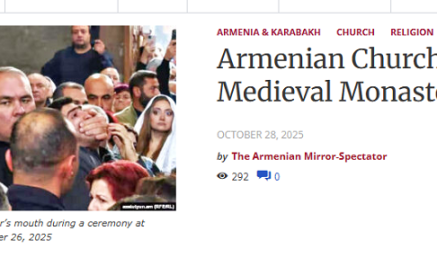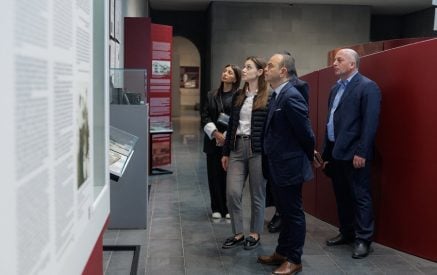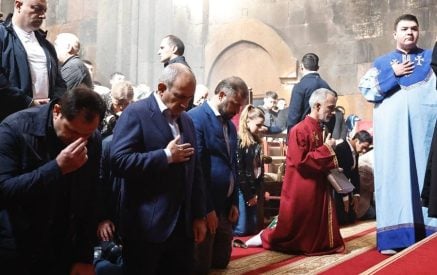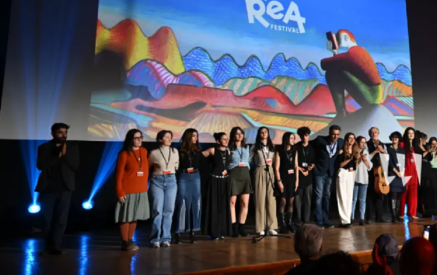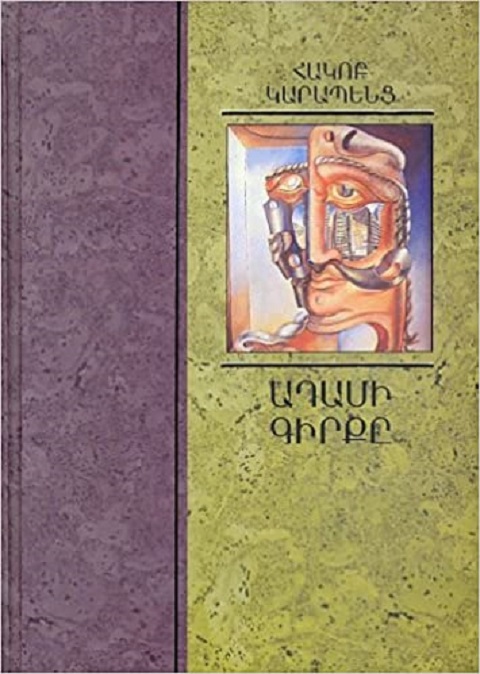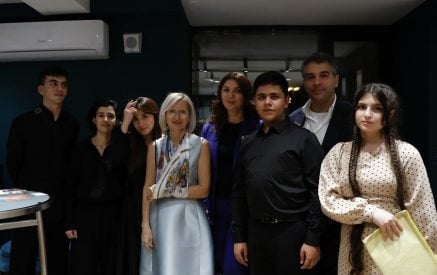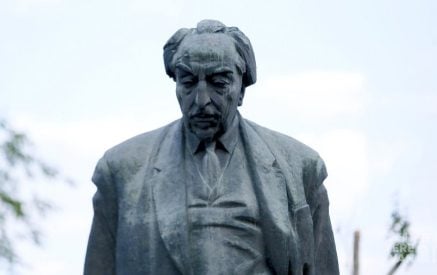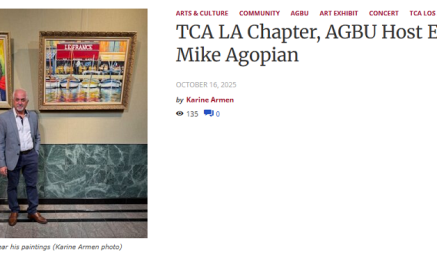The Armenian Mirror-Spectator. ARLINGTON, Mass. — Last week the Khazé Publishing of Tehran announced the release in Farsi of Hakob Karapents’ Adami girke [The Book of Adam], his second and most celebrated published novel.
Titled Ketabé Adam, it has been translated by Andranik Khechoumian, a celebrated Armenian writer, playwright, and translator.
The book includes a preface and brief biography by Ara Ghazarians, curator of the Armenian Cultural Foundation of Arlington, and a commentary by Abbas Jahangirian, a prominent Iranian writer and literary critique.
This is the first major work of Karapents published in Farsi in the country of his birth. It will provide the first opportunity for Farsi-speaking people to become acquainted with the unique literary legacy of Karapents.
Prior to this release of Ketabé Adam only a smattering of his essays and sketches about his life and literary legacy had been published in the Farsi-language Armenian Payman Cultural Quarterly (no. 9/10, no. 53). The book is published on the occasion of his 95th birth anniversary.
Many years ago in answer to an interviewer’s question about writing in English Hakob Karapents had responded “Many encourage me to write in English. . . in order to partake in the American literature, one has to be an American. I am an Armenian, a Diaspora-Armenian, which is a unique creature in the history of mankind . . . I have lived for many years in America, however I do not consider myself an American. Despite all, my Armenianness is my identity, my license to walk among the crowds and feel that I am different.”
This conviction, to which Karapents remained loyal for his entire literary career, unfortunately, for decades, deprived the non-Armenian speaking readers, English in particular, of a rich literary treasure. Karapents’ works were not fully appreciated among his people either as he wrote in Eastern Armenian in a Western Armenian speaking reality. Furthermore, his works sadly, falling victim to Cold War politics, remained inaccessible to his compatriot in Soviet Armenia, thus depriving his compatriots from a unique literary genre and scope of contemporary Armenian literature.
In the final years of his life, Karapents was finally persuaded to make some of his works available in English. He finally agreed to have some of his short stories translated into English. Return and Tiger, a collection of short stories, translated by Tatul Sonentz, was released a few of months after his passing in 1994. This was followed by the Widening Circle and Other Early Short Stories, released in 2007, a collection of seven short stories by Karapents written in 1950s.
The novel is constructed on three levels: the state of the American social order in the final decades (1980s) of the century; the current crisis of the Diaspora Armenian; and the crisis of man finding himself at the end of the twentieth century. The characters and plot serve as the means of linking this triad of knots together and reaching a certain truth. “Aside from flashback,” as observed by the late editor, writer and translator, Aris Sevag, “the book is written to understand life by the return trip and to live life by the road ahead, the metaphysical with the real, sometimes relying on non-existent realities which are more powerful than the real; therefore, from tie to tie, there surfaces a dry journalistic style to produce a clash between tangible and intangible realities. From this standpoint, the Book of Adam enters the self-contained current of contemporary American literature, which is a sad and nondescript visit to solitary persons and solitary communities.”
Karapents wrote The Book of Adam a little more than a decade after his first novel, Daughter of Carthage. He began writing it in mid-1980 and completed in less than a year. The book is dedicated to his wife, Alice. The second edition was released in Armenia in 2012. The book has also been adapted for the stage twice by two young Armenian dramatists, actors, and cinematographer: in Tehran (2005) under the direction of Seto Gojamanian titled “Where are we to be buried,” and in Los Angeles (2017) by Armen Sarvar titled “Yes, Adam Nourian.”
Karapents was born in Tabriz, Iran in 1925. He moved to the United States in 1947 and studied at Kansas City University, majoring in journalism, and later attended the Columbia University where he studied psychology. For over a quarter of a century, he worked and served as the chief of the Armenian Service of Voice of America. After his retirement in 1979, he moved first to Connecticut and later in 1989 to Watertown, where he lived until his death in 1994. He is the author of more than 900 articles in Armenian and English, short stories, novel, essays commentaries, book reviews.
Hakob Karapents





